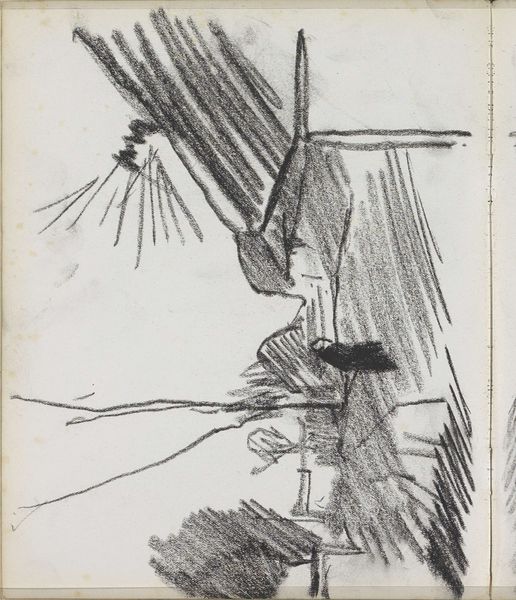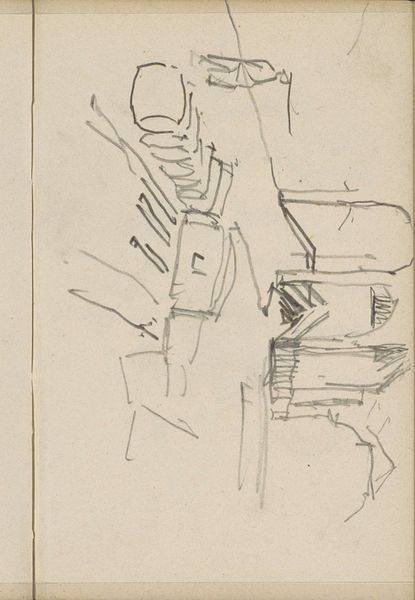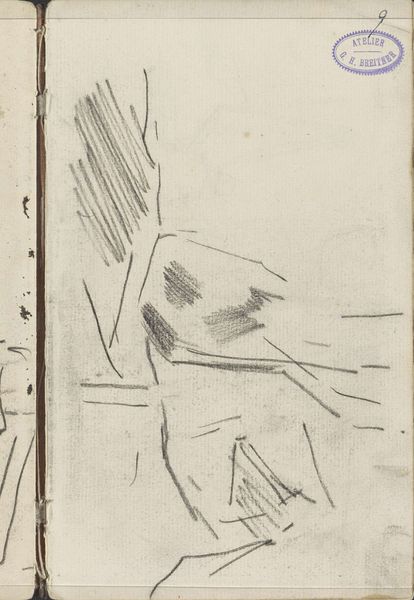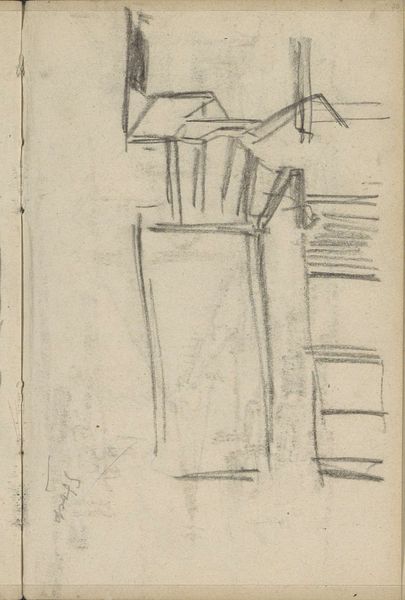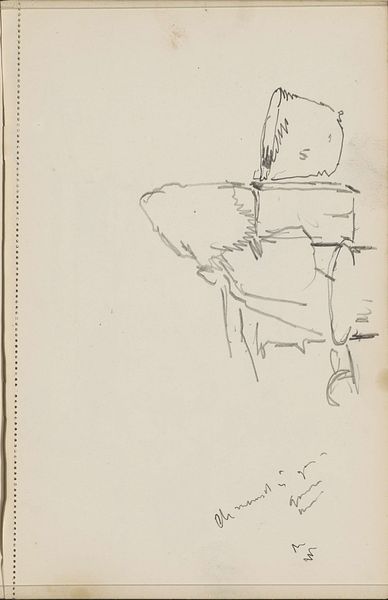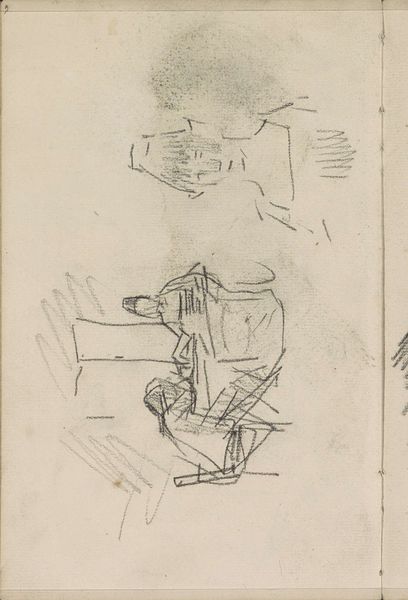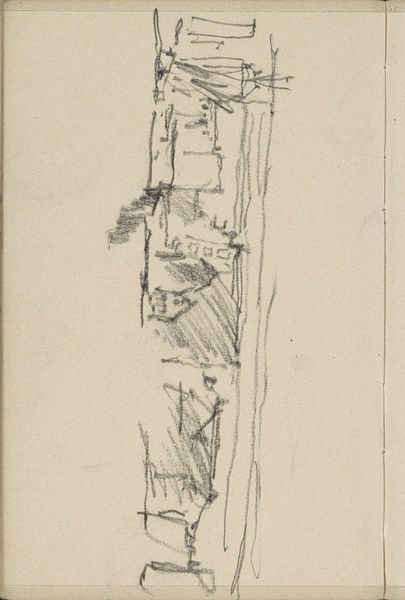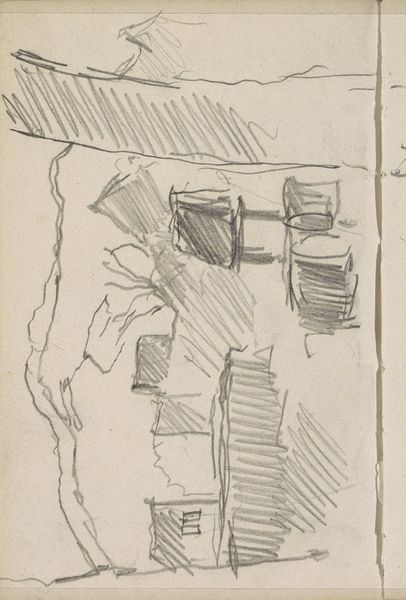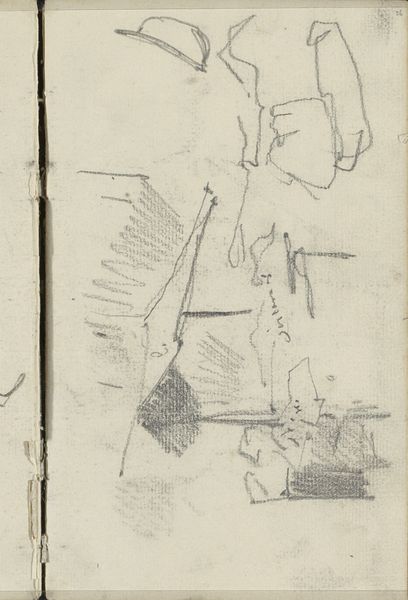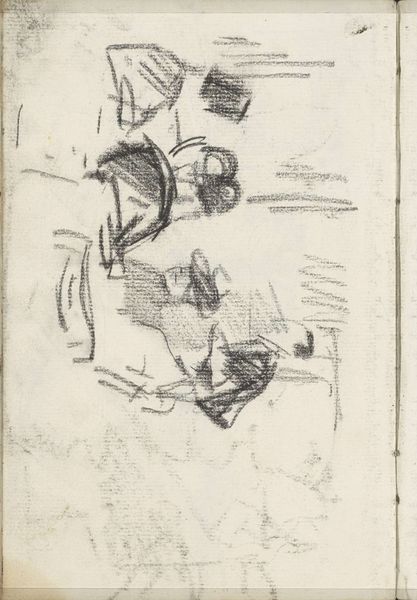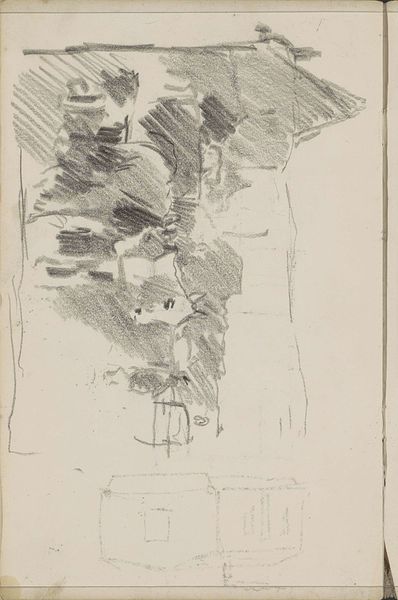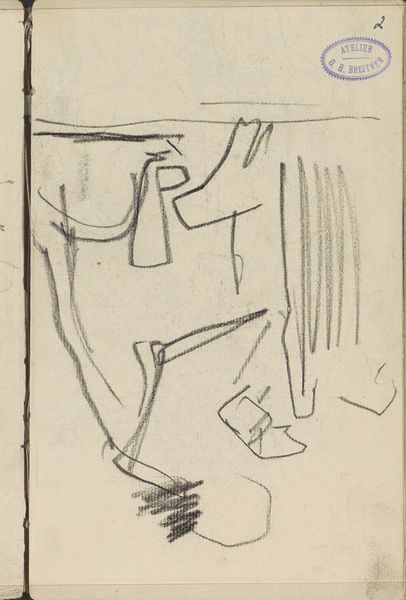
Copyright: Rijks Museum: Open Domain
Curator: Breitner's "Paard met tuig, mogelijk in een stal," likely from the 1914s, drawn in pencil and graphite, presents an interesting subject for discussion here at the Rijksmuseum. Editor: There's something quite poignant about its incompleteness, wouldn’t you say? Almost melancholic with its grayscale. A solitary horse. It really leans into a quiet intimacy, like a fleeting glimpse into a very private moment of labor. Curator: Indeed, the unfinished nature does contribute to its atmosphere, highlighting Breitner's impressionistic style. Considering that era, we see shifts in labor rights and treatment of animals—drawing attention to the conditions and relationships of working horses during significant industrial changes is very revealing. Editor: Absolutely. The bridle gear—almost a symbol of servitude—it’s crudely drawn but dominates. I can't help but focus on what it represents symbolically for labor. Curator: You've touched on something vital. Horses bore a significant economic burden but also signified power. So Breitner’s work captures both a moment in time and, through the horse’s presence, layers of social relations. Also, if you know the cultural context of horses being work animals versus animals of upper-class stature you may understand some nuances about the artwork’s subject Editor: Yes, and notice that heavy shadow—it also feels weighty on an animal. Curator: True, Breitner’s sketches captured city life—the workers, their labor. And seeing a horse indoors removes it from a romantic pastoral ideal. Editor: So, a conscious choice to counter the glorified equine image? Instead it depicts confinement... exploitation, even? Curator: Possibly. The location note "mogelijk in een stal" – possibly in a stable– underscores this detachment and lack of clarity about the animal's full existence. It certainly pushes us to consider those unseen forces at play on working class stability during that time. Editor: That gives it so much more weight, viewing it with consideration to industrial revolution and animal rights issues, instead of purely an isolated drawing, it ties into the zeitgeist. A heavy-handed portrait of that moment. I look at it very differently now! Curator: Exactly. It's about broadening that scope beyond artistic style and symbolism towards an interdisciplinary context. Editor: An image to remind us, it seems. Curator: Precisely.
Comments
No comments
Be the first to comment and join the conversation on the ultimate creative platform.

